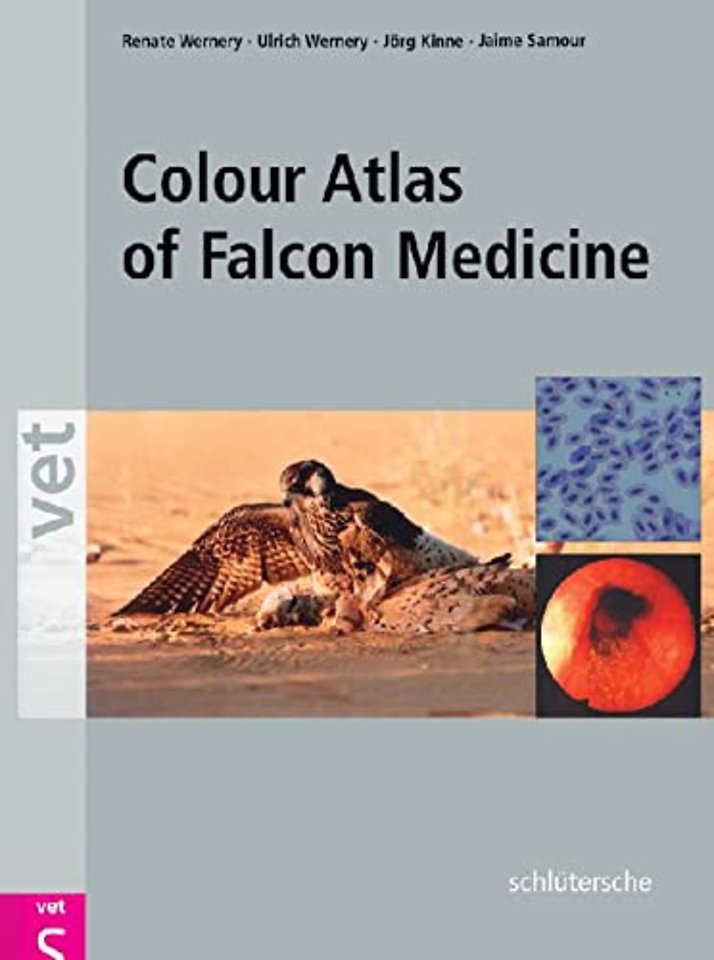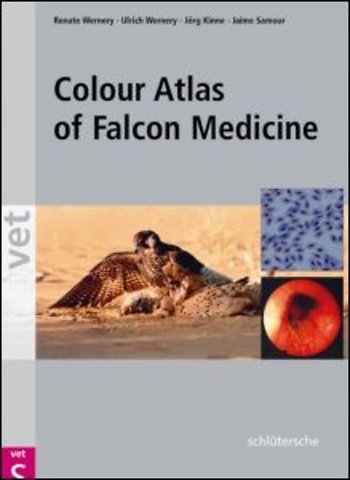Colour Atlas of Falcon Medicine
Samenvatting
Written by authors with many years of practical experience in avian medicine this book aims to give an overview of the most important diseases in falcons and birds of prey. Chapters cover haematology, viral diseases, bacterial diseases, fungal diseases, parasitic diseases and other miscellaneous diseases. Clinical symptoms are described as well as pathological and histological findings. A separate chapter deals with the history of falconry in the Middle East and the ongoing protection of the species. The book is fully illustrated containing around 380 photos. It will be of interest to practising veterinarians specialising in avian medicine as well as veterinary students, and for professionals working with falcons, researchers, zoologists and biologists.
Specificaties
Inhoudsopgave
<p>Preface.</p>
<p>Acknowledgement.</p>
<p>1 Falcons and Falcontry in the Middle East.</p>
<p>2 Haematology and Blood Biochemistry.</p>
<p>Method for Blood Sample Collection.</p>
<p>Automated Haematology System.</p>
<p>Blood Film Preparation and Staining.</p>
<p>Reference Ranges.</p>
<p>Glossary of Terms.</p>
<p>Morphology of normal Falcon Blood Cells.</p>
<p>The Different Anaemias in Birds.</p>
<p>Haemorrhagic Anaemia.</p>
<p>Haemolytic Anaemia.</p>
<p>Depression Anaemia.</p>
<p>Pictures of Normal Haematology of Different Falcon Species.</p>
<p>Abnormalities in Falcon Leukocytes.</p>
<p>Toxic Changes in Hetetrophils.</p>
<p>Abnormal Lymphocytes.</p>
<p>Appearance of Unusual Cells.</p>
<p>Falcon Leukogramme.</p>
<p>Leucocytosis.</p>
<p>Leukopenia.</p>
<p>Haematological Picture of Abnormal Leukocytes.</p>
<p>Blood Biochemistry.</p>
<p>3 Viral Diseases.</p>
<p>Haematological Pictures of Falcons with Viral Infections.</p>
<p>Paramyxovirus–1 Infection.</p>
<p>Herpesvirus Infection.</p>
<p>Falconpox.</p>
<p>Influenza.</p>
<p>4 Bacterial Diseases.</p>
<p>Haematological Picture of Falcons with Bacterial Infections.</p>
<p>Clostridium Perfringens Enterotoxaemia.</p>
<p>Chlamydophilosis.</p>
<p>Colisepticaemia.</p>
<p>Pseudomonas Septicaemia.</p>
<p>Pasteurellosis.</p>
<p>Mycoplasmosis.</p>
<p>Salmonellosis.</p>
<p>Tetanus.</p>
<p>Tuberculosis.</p>
<p>5 FUNGAL DISEASES.</p>
<p>Haematology Pictures of Aspergillosis.</p>
<p>Aspergillosis.</p>
<p>Other Fungal Diseases.</p>
<p>Candidiasis.</p>
<p>6 Parasitic Diseases.</p>
<p>Protozoa.</p>
<p>Haemoprotozoa.</p>
<p>Malaria.</p>
<p>Babesiosis.</p>
<p>Haemoproteosis.</p>
<p>Leucocytozoonosis.</p>
<p>Protozoa of the Alimentary Tract.</p>
<p>Trichomonsis(Frounce).</p>
<p>Flagellate Enteritis.</p>
<p>Coccidiosis.</p>
<p>Helminths.</p>
<p>Serratospiculosis.</p>
<p>Capillariosis.</p>
<p>Trichinellosis.</p>
<p>Other Helminths.</p>
<p>Nematodes.</p>
<p>Anisakidae.</p>
<p>Cestodes(Tapeworm).</p>
<p>Trematodes(Flukes).</p>
<p>7 Miscellaneous Diseases.</p>
<p>Poor Performance.</p>
<p>Bumblefoot.</p>
<p>Amyloidosis.</p>
<p>Gout.</p>
<p>Lead Intoxication.</p>
<p>Ammonium Chloride (Schnather) Intoxication.</p>
<p>8 Diseases of Unknown Aetiology.</p>
<p>Brain.</p>
<p>Muscle.</p>
<p>Liver.</p>
<p>9 Vaccination Regime.</p>
<p>Literature.</p>
<p>Subject Index.</p>

